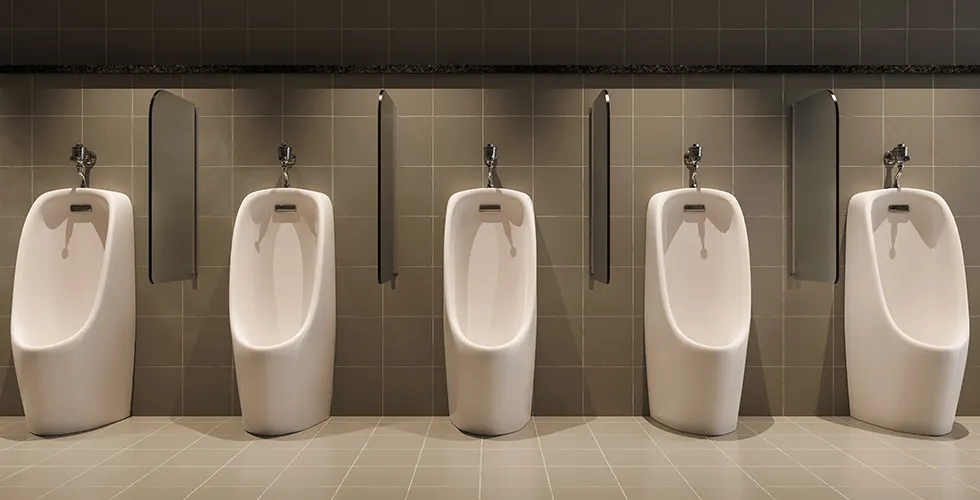For over a century, the urinal has gone virtually unchanged—along with the age-old annoyance of splashback. However, engineers from the University of Waterloo and Weber State University have just cracked the code using basic physics and an innovative redesign that could revolutionize public restroom hygiene.
Their study, published in PNAS Nexus, reveals that the splash problem is all about the angle of impact. When liquid hits a surface at more than 30 degrees, it rebounds, causing messy droplets to scatter. But below that “critical angle,” splashback drops by as much as 95%.
Inspired by nature—where even dogs instinctively aim at shallow angles to avoid splash—researchers designed two new urinals, called the Cornucopia and the Nautilus, that force all impact angles to stay under that magic 30-degree mark. These weren’t just theoretical designs. In lab tests simulating real-world use, the new models nearly eliminated splash—even compared to modern commercial urinals and a replica of Duchamp’s iconic “La Fontaine.”
The implications go beyond dry shoes. With over 56 million urinals in U.S. non-residential settings, widespread adoption of this design could eliminate over a million liters of urine splash daily. That’s not only a win for hygiene—it could cut down on water, labor, and chemical use required for cleaning.
Best of all, this fix doesn’t require high-tech gadgets or expensive materials. Just smarter shapes using regular porcelain and existing manufacturing methods. It’s a simple, scalable solution to a surprisingly persistent problem—and proof that even in the most mundane places, physics can make life cleaner, easier, and a whole lot less gross.

